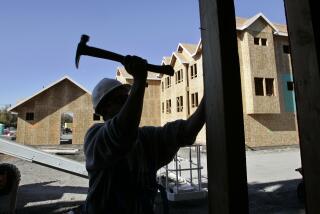Latino Poverty Is Worsening, House Panels Told
- Share via
WASHINGTON — Two of every five Latino children lived in poverty in 1985, the director of a nonprofit research and analysis organization testified Thursday before a joint hearing of two House panels.
Robert Greenstein, director of the Center on Budget and Policy Priorities, said that the number of Latinos under 18 living below the poverty level increased by 207,000 in 1985, to 2.6 million. Both the number and the percentage of Latino children living in poverty are the highest since 1973, when the Census Bureau began collecting data on Latino poverty.
“Poverty is rising more rapidly among Hispanics than in any other group in the nation,” said Greenstein, who testified before the House Select Committee on Children, Youth and Families and the House Education and Labor subcommittee on employment opportunities. “We feel it needs to go back to the top of the agenda. Reducing the deficit in the budget and trade is important, but so is poverty.”
Further Decline Predicted
Noting a Census Bureau report that the 1985 poverty rate of Latinos of all ages rose to 29%, a 0.6% increase over the previous year, Greenstein predicted that Latinos will replace blacks by the end of the decade as the ethnic group most affected by poverty in the United States. In 1985, the black poverty rate decreased 2.5%, to 31.3%.
Another witness, Siobhan Oppenheimer-Nicolau, president of the Hispanic Policy Development Project, linked the Latino poverty rate to the high number of dropouts and borderline performance of Latinos in high school. Of those who stay in school past the 10th grade, he said, 38% are graduated with grades of C or lower, and 15% never graduate.
Poverty Level Defined
In 1985, the federal definition of poverty ranged from an annual income of $5,469 or less for one person to $22,083 or less for a household of nine.
According to the census data, the percentage of Latinos under 18 living in poverty was 39.9% last year, compared to 38.7% in 1984.
The median income of Latino families dropped 2.5% in 1985 but remained higher than the median income of black families, which rose by 5%.
The Census Bureau broke down the data regionally.
More to Read
Get the L.A. Times Politics newsletter
Deeply reported insights into legislation, politics and policy from Sacramento, Washington and beyond. In your inbox twice per week.
You may occasionally receive promotional content from the Los Angeles Times.










